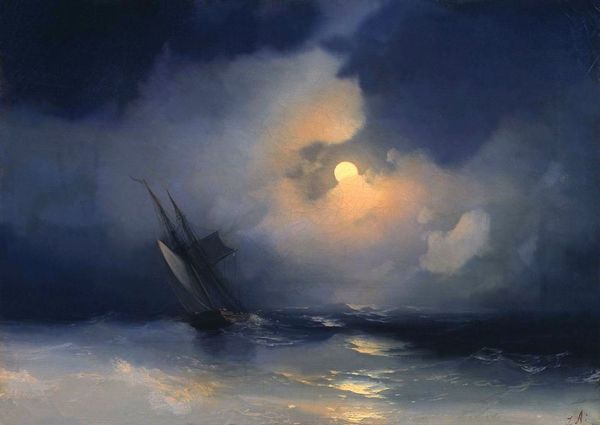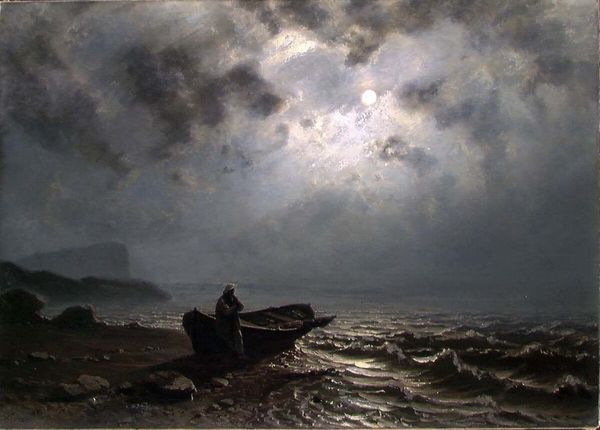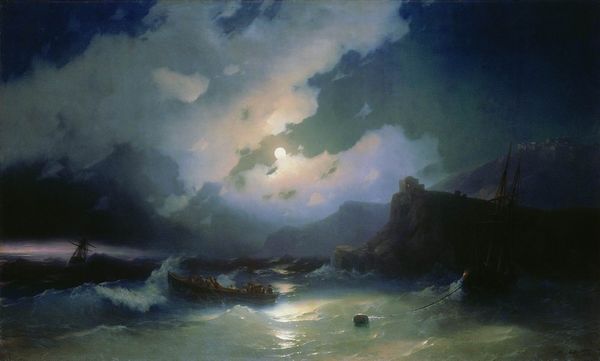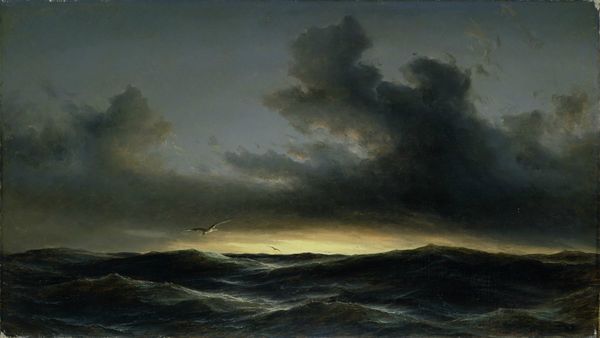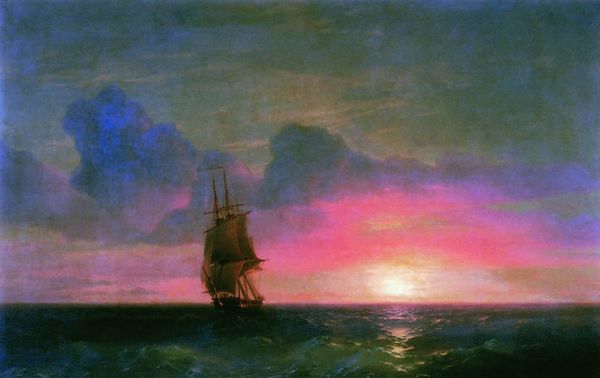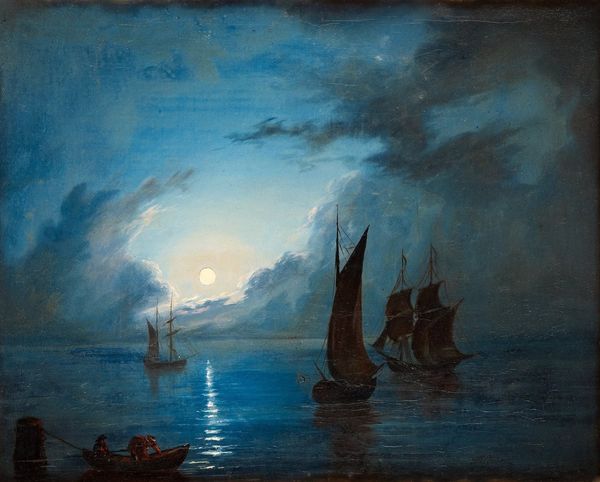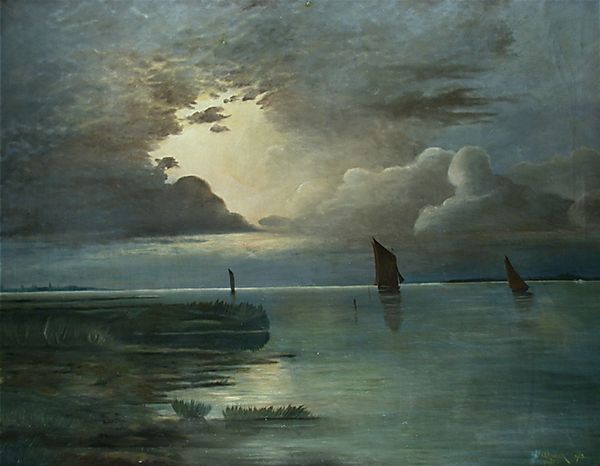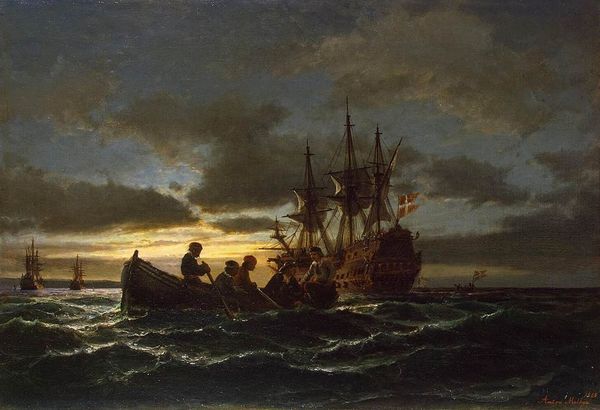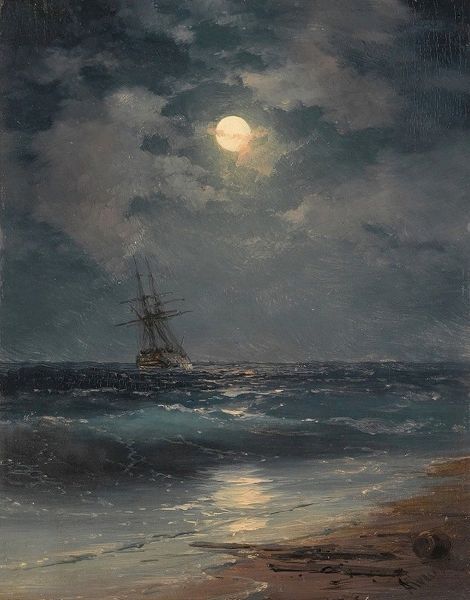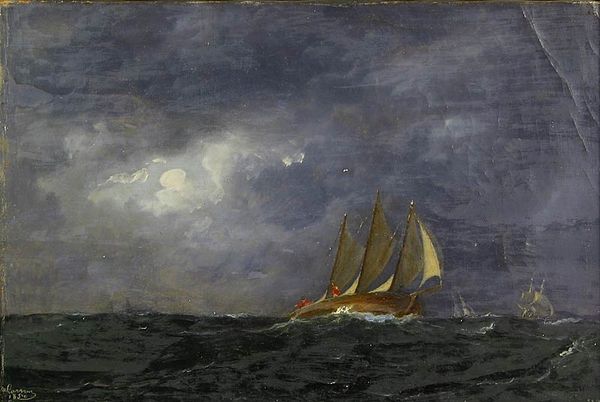
Copyright: Public domain
Editor: Here we have "The Convict Ship T.K. Hervey," painted in 1864 by James Hamilton, using oil paint. It's quite a dramatic scene, a lone ship silhouetted against a turbulent sky. How do you interpret this work from a formalist perspective? Curator: The painting is structured through a compelling use of light and shadow. Note the sharp contrast. The composition directs the viewer's eye upwards from the dark, almost monolithic mass of the water and the ship, to the luminance of the sky and moon. Observe how Hamilton has achieved balance using the Rule of Thirds. The horizon sits roughly on the lower third line, while the ship itself is placed off-center, avoiding a symmetrical and static feel. Editor: I see. So, the placement of the ship creates a more dynamic feel, despite its small size? Curator: Precisely. And the impasto technique—the thick application of paint—is particularly evident in the cloud formations, creating a sense of depth and movement. Consider the artist’s employment of chiaroscuro, and how this pictorial device serves to heighten the atmospheric drama inherent in a maritime painting. Editor: The way the light hits the clouds is so intense. Curator: Yes, it draws our gaze upward, further emphasizing the smallness of the ship, and arguably, its vulnerability in the face of nature's power. The success here hinges not just on the representation, but on the relationship of pictorial elements, on its successful employment of tonal and structural vocabularies to affect the emotions of the observer. What have you noticed? Editor: I initially focused on the ship, but analyzing the interplay of light and shadow has given me a greater appreciation for the entire composition. It is how these contrasts affect one another. Curator: Precisely. And in turn the composition is more impactful and dynamic than it seems upon first inspection.
Comments
No comments
Be the first to comment and join the conversation on the ultimate creative platform.
